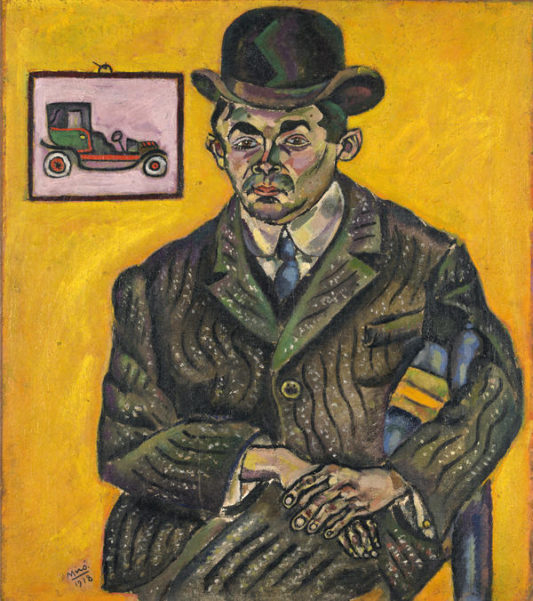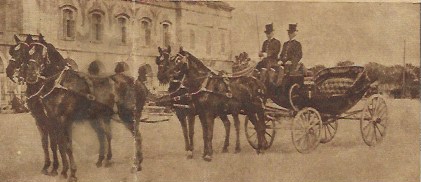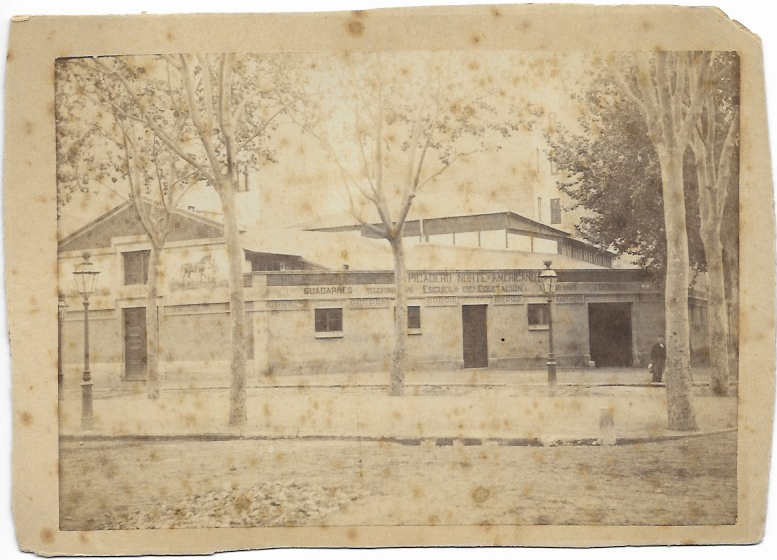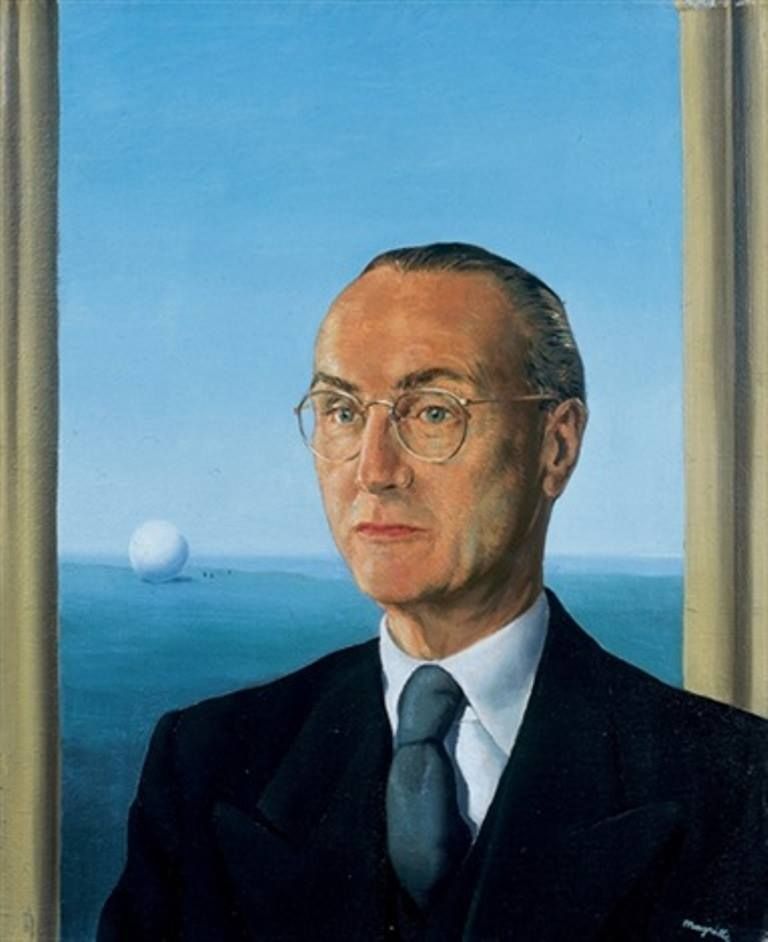In 1918, Joan Miró painted a portrait of his friend Heribert Casany. Berta Jardí rescues Heribert from oblivion in her novel L’home del barret (Univers, 2019) and reveals the story behind the painting.
For the Fundació’s blog, the author gives her account of the painting’s extraordinary journey since Miró painted it until it was finally shown at the Kimbell Art Museum in Fort Worth, Texas. Its wanderings are surrounded by horses and automobiles, mysteriously connected to the life of the man in the portrait.

Horses and Automobiles
In 1918, Joan Miró painted a portrait of his friend Heribert Casany sitting in a blue wooden chair against a flat sunflower-yellow background on which he placed a small painting of an automobile. Miró had Casany sit with a bowler hat on his head like the ones many chauffeurs wore at the time. The piece, owned by the Kimbell Art Museum in Fort Worth, Texas, is currently catalogued as Portrait of Heriberto Casany, although previously it had also been known as The Man in the Hat and The Chauffeur.
The car and the chauffeur’s hat are the painter’s nod to the Casany family business. Heribert’s father Francisco Casany was the owner of the Compañía General de Coches y Automóviles, the largest horse-drawn carriage and automobile rental company in Barcelona in the early twentieth century.

Carriage of Casany company

Picadero Americano, horse riding school owned by Casany family
Miró was drawn to the image of the automobile. He imagined that in the future there would be paintings of streets “with big houses, the sound of car horns […], people running around madly and trolleys and buses,” as he wrote in a letter to his friend Ràfols during that period. Heribert didn’t seem to care a straw for cars: by then, he had disengaged entirely from the family cab business. He lived for art. He wanted to be a ceramist.
The Man in the Hat was shown in Barcelona in 1918 and two years later it travelled to Paris. The canvas was included in an exhibition – Joan Miró’s first show abroad – at Galerie La Licorne, near the Champs Elysées. We then lose track of the painting until 1928, when it travelled to Brussels along with other works by Miró for an exhibition at Galerie Le Centaure, where René Magritte had shown his first paintings a few years earlier.
Magritte, a contemporary of Casany and Miró, painted many men in bowler hats – dozens of them in bowler hats and black overcoats, all identical and motionless as mannequins. His characters were alone or accompanied by moons, pipes, candles or umbrellas. The reiteration of certain themes is very frequent in Magritte’s work and images of jockeys are also recurrent. In the mid-1960s, the painter took on a subject that was enigmatic, like most of his works, in a painting of an early twentieth-century automobile with a chauffeur driving a man wearing a bowler hat in the back seat. On the roof of the vehicle, a jockey rides his horse in parallel. Referring precisely to this canvas, the artist wrote in a letter to a friend that when he painted it he had imagined an automobile with a steering wheel made of bacon.
Nonetheless, aside from this anecdote –the interpretation of which is more enigmatic still – and from the bowler hats, jockeys and automobiles, Magritte also painted René Gaffé, the Belgian collector who bought Heribert Casany’s portrait. He placed Gaffé in front of an unreal, flat, sea-blue landscape with a rock protruding from it. As dapper and elegant as a businessman in the City of London, hair parted and wearing round wire-rimmed glasses, Gaffé seems to be imbued with the cold blueness of the canvas.

Portrait of René Gaffé. René Magritte, 1942 © Adagp, Paris, 2019
A few years after he purchased the portrait of Casany, René Gaffé sold it to the art dealer Pierre Matisse, the son of the painter Henri Matisse. In December of 1937, Matisse showed the painting at a Miró exhibition he held at his gallery in Manhattan.
The painting was on its way again. Two years later, it was bought by the king of the automobile industry, Walter P. Chrysler, who kept it until 1950. The piece changed hands twice again, until finally, in 1984 – just a few months after Miró’s death – it was purchased by the Kimbell Art Foundation in Fort Worth, where it is currently on exhibit.
As fate would have it, the nod that Miró had begun by placing an automobile in the portrait of the son of the owner of the Compañía General de Coches y Automóviles – a young man with no interest whatsoever in horses or cars – continued until his death. First, when the two European galleries that showed the portrait bore the names of imaginary creatures with the essence of a horse: a unicorn and a centaur. Then, when Magritte, the painter of the enigmatic piece with a jockey galloping on top of a car, painted the portrait of the collector who bought Heribert Casany’s portrait. Later, when the painting was purchased by a car manufacturer. And, last of all, when the portrait ended up at a museum in Fort Worth, a city famous for its rodeos.
Horses and automobiles followed Heribert throughout his life.




